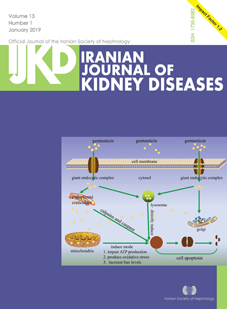Effect of Peritoneal Transport Characteristics on Clinical Outcome in Nondiabetic and Diabetic Nephropathy Patients with Peritoneal Dialysis
Abstract
Introduction. This study aimed to investigate the influence of peritoneal transport characteristics on clinical outcome in nondiabetic and diabetic nephropathy peritoneal dialysis (PD) patients.
Materials and Methods. All 112 patients were from the PD Center. Peritoneal transport characteristic was assessed by peritoneal equilibration test. The patients were divided into 2 groups of high-transport group (HT) and non-high-transport group (non-HT) and followed-up till December 31st, 2010. The primary outcomes were all-cause death and technique failure.
Results. The patients were followed-up for 65.9 ± 23.9 months. Diabetic nephropathy patients with HT had a higher all-cause mortality (P = .04) and technique failure (P = .04) than those with non-HT. There were no differences in outcomes between HT and non-HT subgroups without diabetic nephropathy. Cox regression demonrtrated that high peritoneal transport (HR, 2.369; 95% CI, 1.056 to 5.311), diabetic nephropathy (HR, 2.499; 95% CI, 1.134 to 5.508), age (HR, 1.081; 95% CI, 1.032 to 1.133), and peritoneal creatinine clearance (HR, 0.962; 95% CI, 0.929 to 0.997) independently predicted all-cause mortality in continuous ambulatory PD patients. Moreover, high peritoneal transport (HR, 2.299; 95% CI, 1.079 to 4.899) and age (HR, 1.070; 95% CI, 1.026 to 1.116) predicted technique failure in continuous ambulatory PD patients.
Conclusions. Diabetic nephropathy PD patients with HT had a higher all-cause mortality and technique failure than those with non-HT, but we did not find the correlation between peritoneal transport and outcome in nondiabetic patients. The peritoneal transport was an independent predictor for outcomes in continuous ambulatory PD patients.


